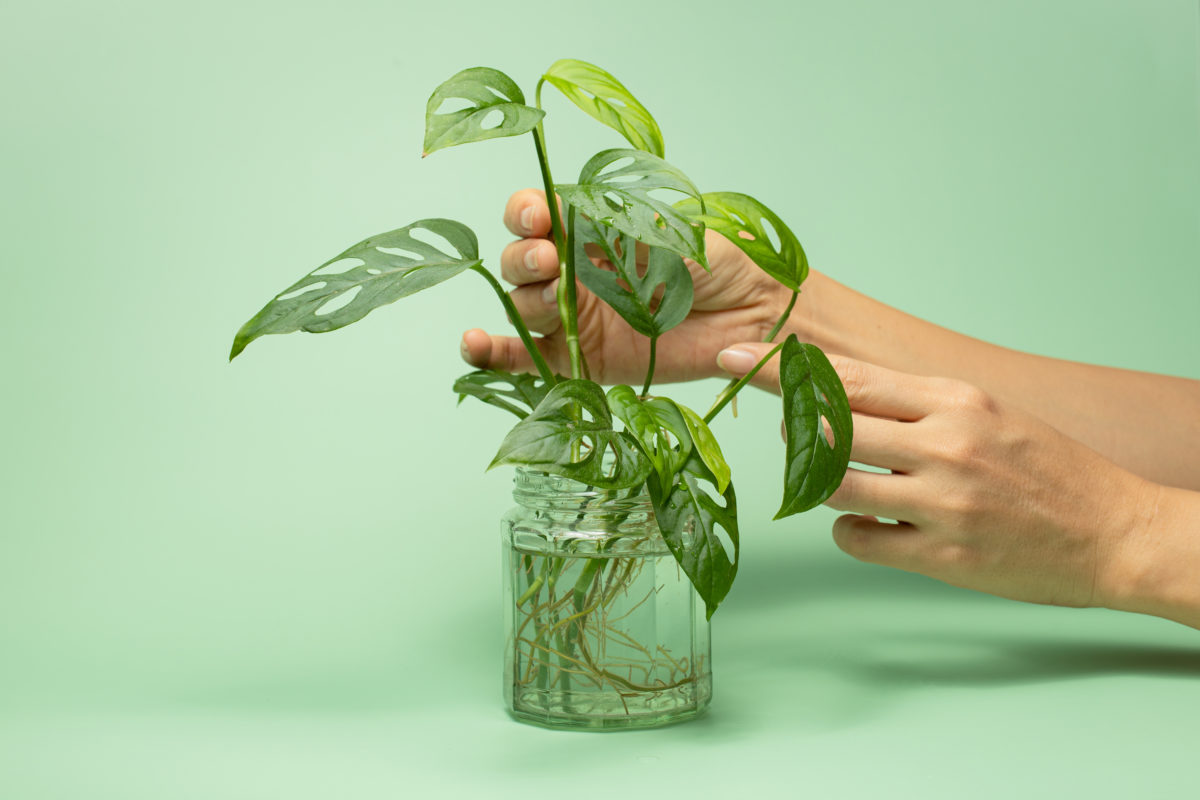
Tropical décor is incomplete without at least one Monstera plant dotted around the home. Appreciated for their large and fenestrated leaves, it’s easy to see why these houseplant favorites are so popular.
While they are not incredibly difficult to care for, they can be tricky for beginner plant parents. Some also don’t have the space to grow a towering Monstera, or the time to correctly care for one. If that sounds like you, don’t give up on your Monstera growing dreams just yet.
Instead, try growing your Monstera in water.
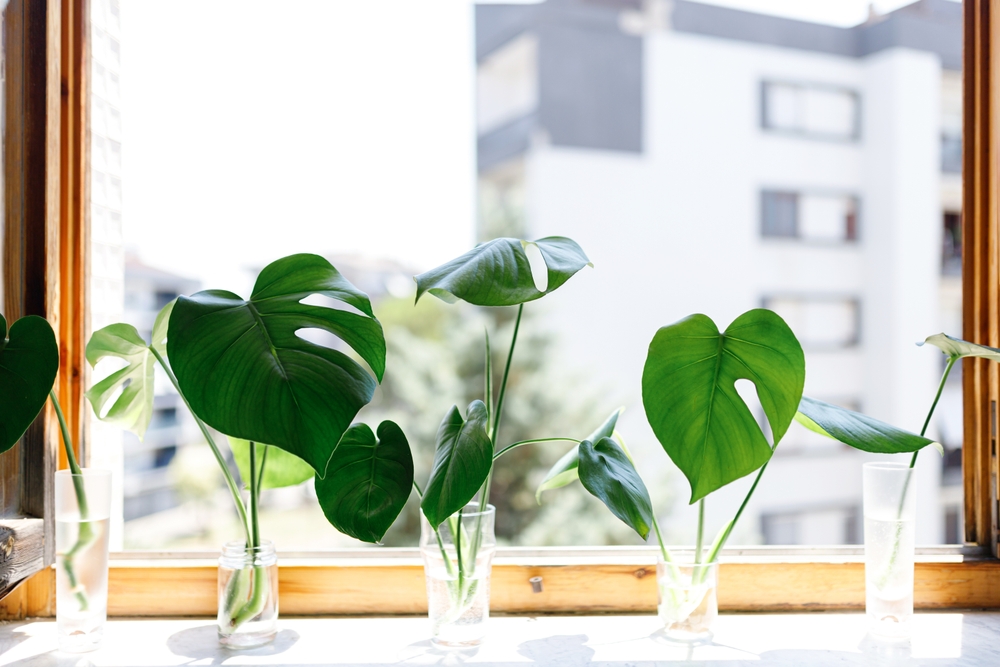
Monsteras are one of the best plants to grow in water long-term. The leaves look stunning in a vase and the roots adapt quickly to water growth. If you want to give this fun gardening experiment a go, here’s how to get it right.
Why Grow Monsteras In Water?
Less Mess
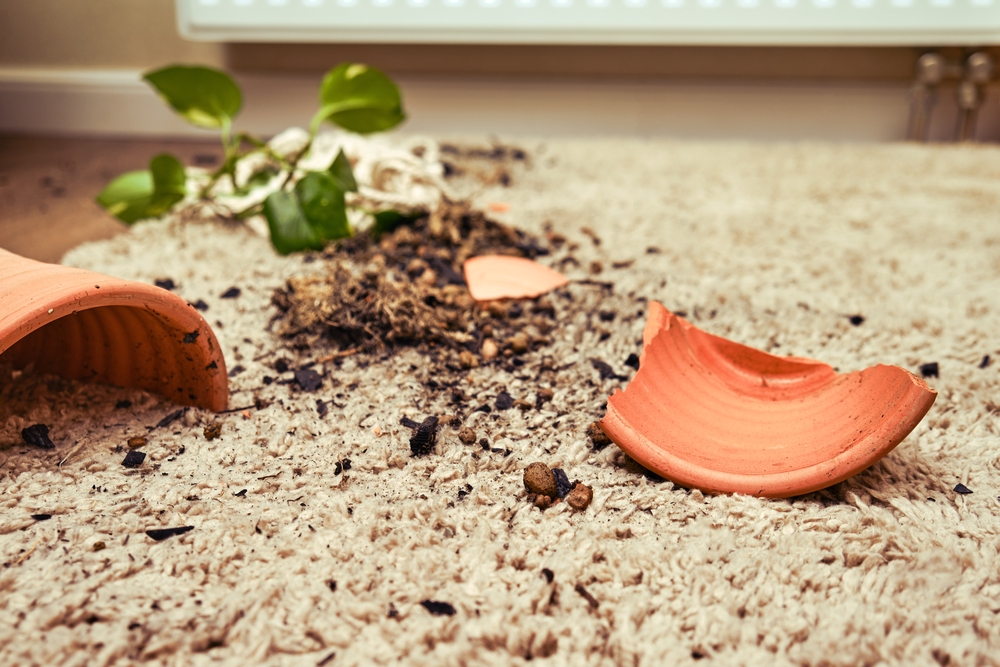
Indoor gardening can be a messy business. We’ve all accidentally knocked pots over, or perhaps had some curious paws or hands around the home do it for us.
Watering can also lead to mess, from water spots on furniture to spilled soil around the base. Unfortunately, even if you are incredibly careful, there is no way to avoid the occasional mishap.
Unless you decide to grow in water.
When growing a Monstera in water, there is no soil involved, and subsequently, far less chance of mess. As long as you choose the right container, watering is easy. Plus, that water remains contained, rather than spilling from drainage holes haphazardly.
As long as you keep the container out of reach of any passers-by that may knock it over accidentally, you won’t ever have to worry about unexpected clean-up anymore.
Fewer Growth Problems
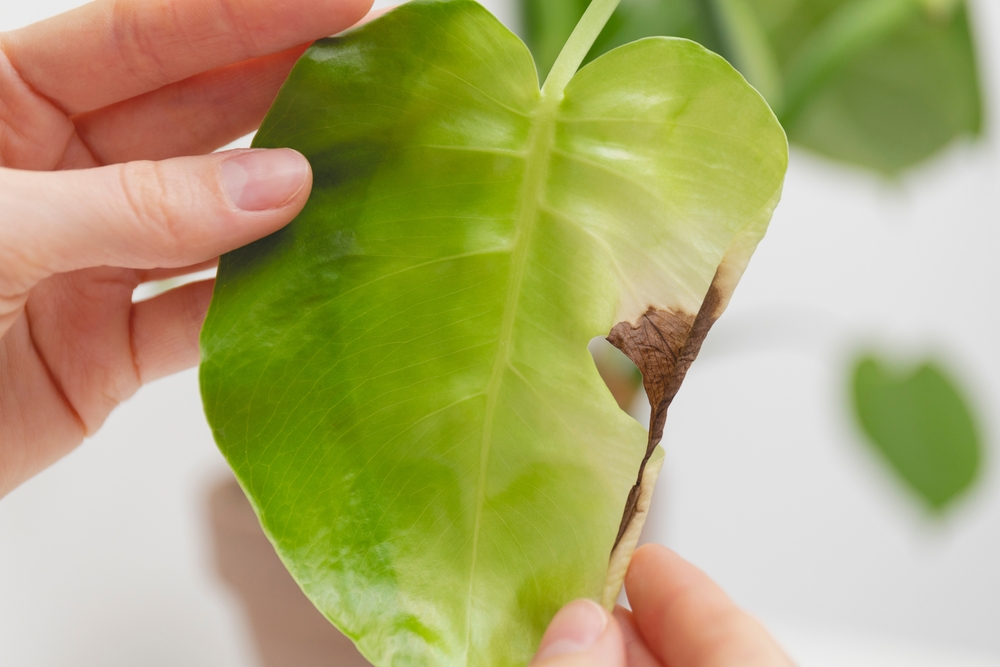
Water-grown Monsteras are incredibly low-maintenance. There is no need to worry about over or underwatering, repotting, or any of the other concerns that come with growing in soil. As long as they are placed in the right position and always have enough clean water, they will grow happily without fuss.
If you are one of those gardeners that considers themselves a black thumb (although I don’t think those really exist), this may be the option for you.
While there are still things that can go wrong when growing in water, there are far fewer concerns to keep track of. You can build up your confidence again by growing lush stems, priming you to expand your indoor garden with more soil-grown plants.
Fewer Pests
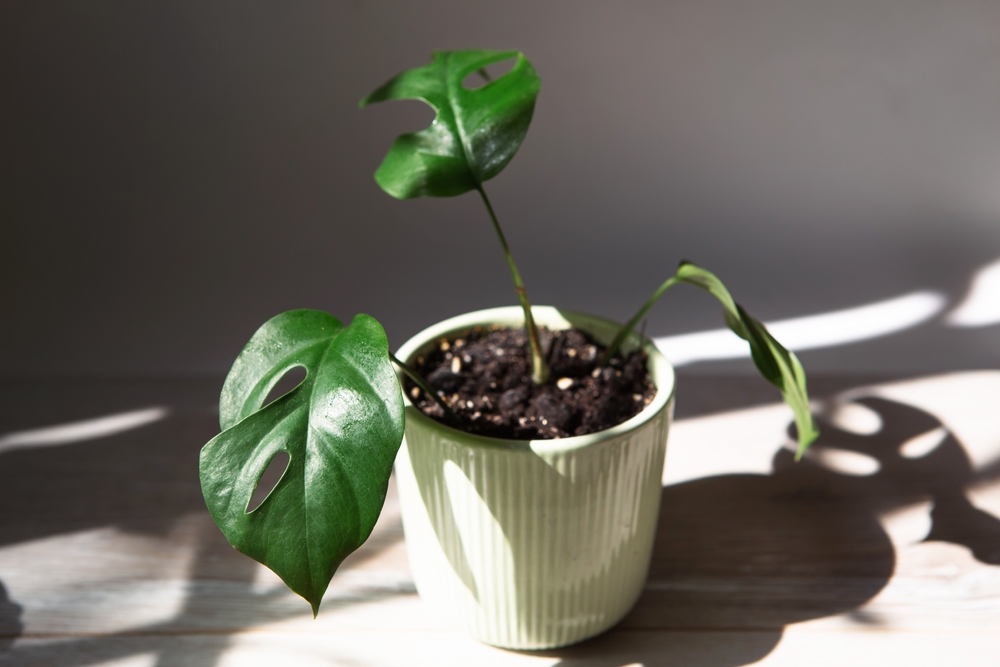
Indoor pest problems are a nightmare for houseplant owners. One small problem can rapidly spread to the rest of your plants and throughout your home, making it incredibly difficult to get rid of. Many of these pests reside in or lay eggs in houseplant soil, leading to most of the problems.
So, once you get rid of the soil, you can drastically cut your potential pest risk. This is most effective for one of the most annoying houseplant pests around – fungus gnats. These tiny flying bugs are attracted to moist soil and are hard to get rid of thanks to their flying capabilities.
If you consistently have fungus gnat problems in your houseplants, or problems with any other soil-based pest, you should give growing in water a try.
It Looks Great
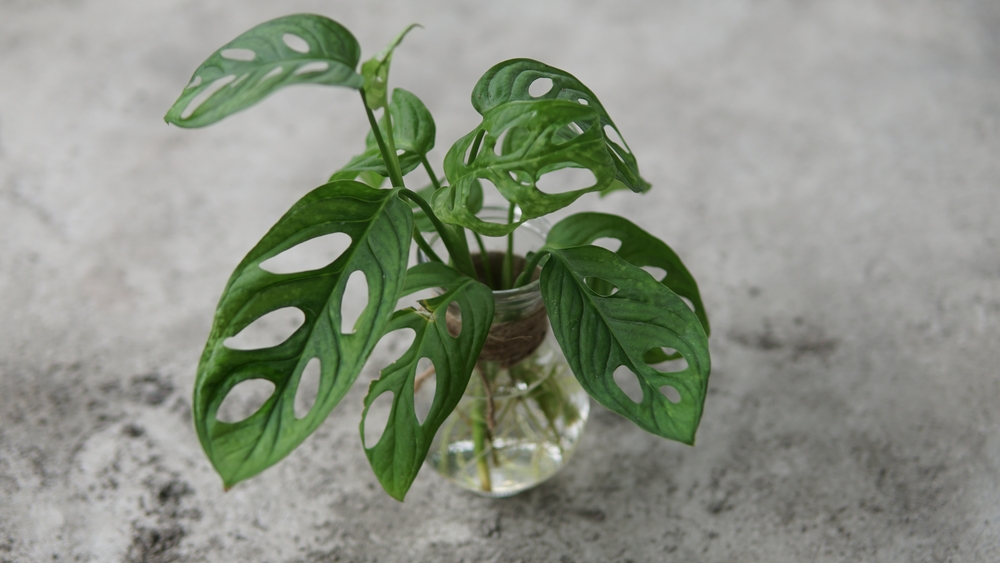
There is a reason why you’ll see Monstera leaves in vases all over social media. Simply put, they look great.
These plants are beloved for their impressive leaves, and there is no better way to enjoy them than by making them a statement piece in the home. Once you add an intricate root system to the mix, you have a fascinating décor item that is bound to turn heads.
Things To Consider
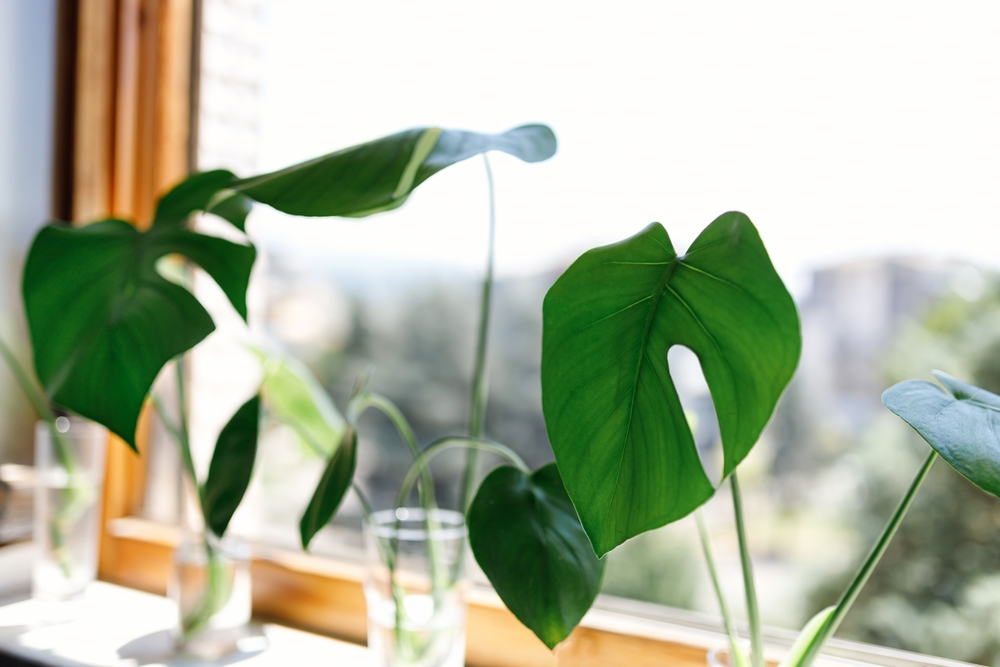
All these benefits of growing Monsteras in water do come with a few caveats.
For one, your plant likely won’t grow very big, or won’t grow much at all. Although they like moisture, Monsteras aren’t used to growing without soil. In these conditions, they won’t add much height or put out many new leaves, even during the peak growing season.
They also may not last very long. While you can provide nutrients to sustain the plant, growing in water long-term doesn’t necessarily mean forever. As the existing leaves get older and start to die off after a couple of years, they will need to be replaced with a brand new cutting to continue growing.
Finally, while this is a low-maintenance way to grow a Monstera, it doesn’t mean there is no maintenance. You can’t simply pop a cutting in water and hope for it to stay alive for several months without attention. Their needs are few, but they still have them.
If you have an overgrown Monstera that could use a trim, there’s no harm in giving this method a go for fun. Few tools are required – you can generally get by with stuff you already have in your home, making it a fun weekend project to try.
How To Grow Monstera In Water
To get started, all you need is a thriving Monstera plant, a vase, and some water.
What water should I use?
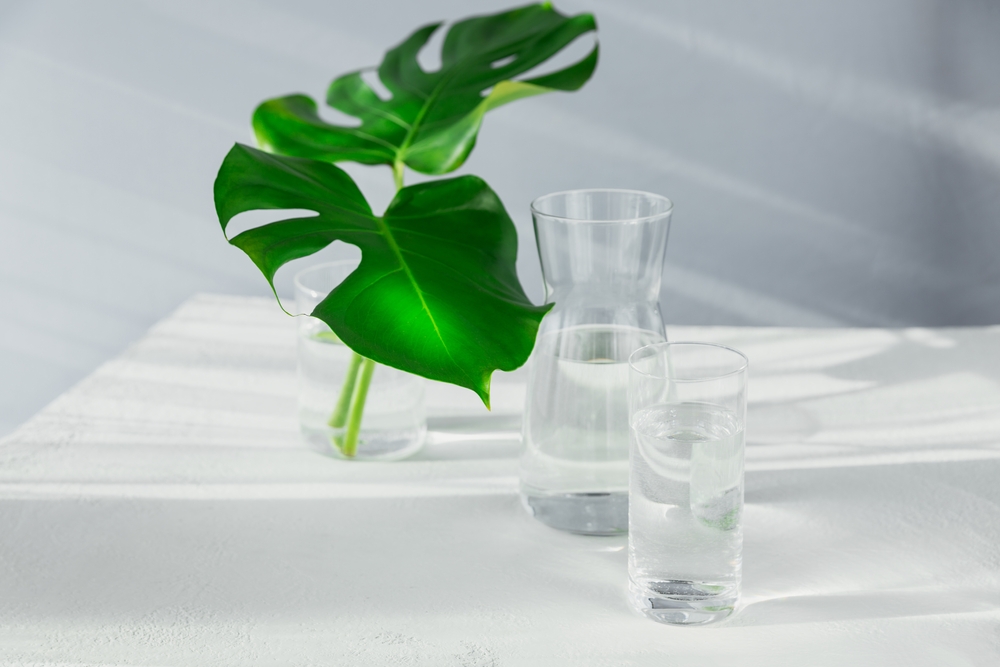
The type of water you use is more important here than when growing in soil as the roots will be permanently exposed to it. In essence, it needs to be high-quality water free of chemicals that may harm the roots over time.
Tap water often contains elements used to clean it, such as chlorine, that can impact root growth with long-term exposure. If you have good-quality tap water, this isn’t as much of a concern, but if you don’t, it’s best to find another solution.
Rainwater is ideal as it is free and contains trace nutrients that the plant can benefit from. But, if you don’t have any way to collect rainwater in your home, you can also use filtered water.
Finding the right container
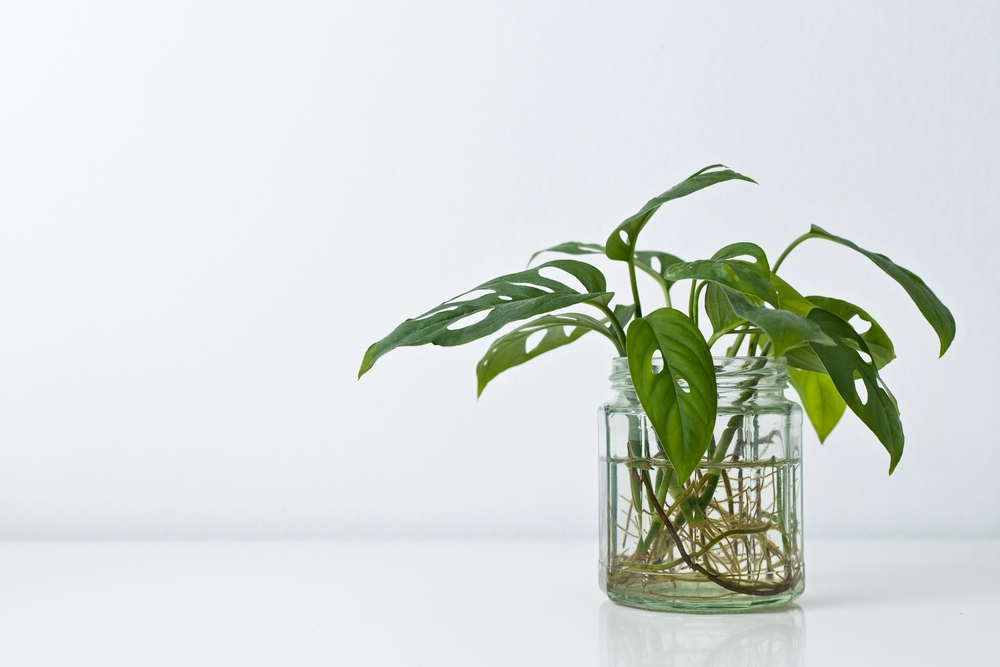
A glass vase is an ideal container to grow Monsteras in water. This allows you to keep an eye on the health of the roots and check for any signs of bacterial growth. You can use a colored container, but you will need to be more vigilant in checking in the water regularly.
Choosing a cutting
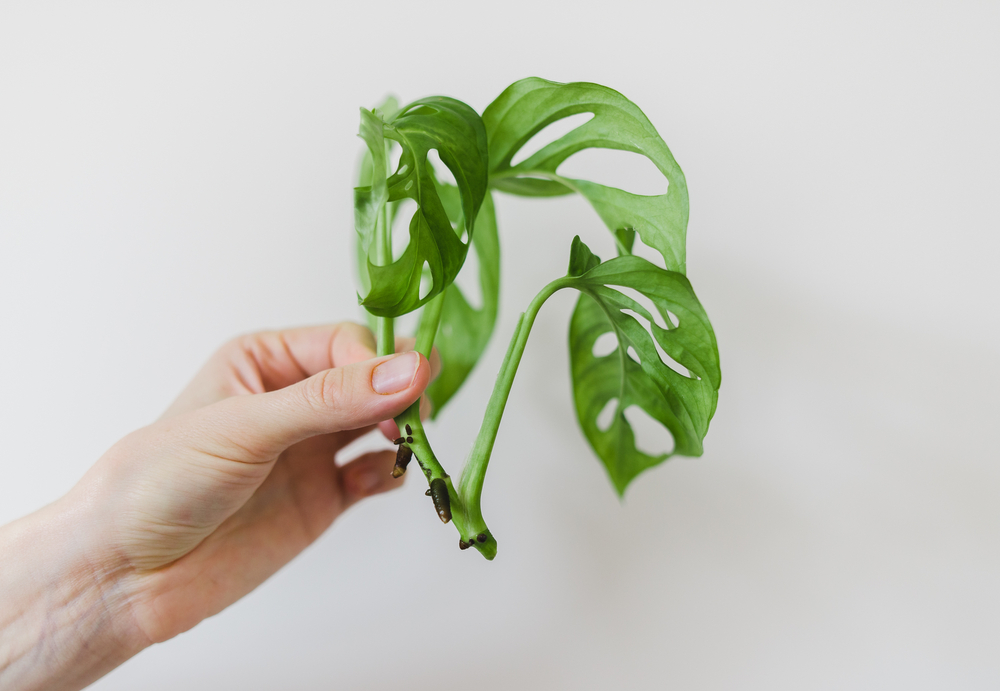
For your Monstera to grow in water successfully, it will develop slightly different roots to those it produces in soil. These water roots are thinner and more delicate than soil roots that need to anchor the plant and absorb moisture from the surroundings.
As the roots are slightly different, it’s best not to move a Monstera from soil into water for long-term growth. While it’s not impossible to keep it alive, the soil roots will likely rot when left to sit in water, causing a number of problems with growth.
Instead, take a cutting from your Monstera as if you were propagating, and allow it to develop its own roots in water. Not only does this increase your chances of success, but it also doubles your stock at the same time.
Follow this guide on how to take a cutting from a mature Monstera plant, popping the cutting into your glass of rain or filtered water. Remove any traces of soil before you plant to prevent the transfer of dirt and bacteria to the water.
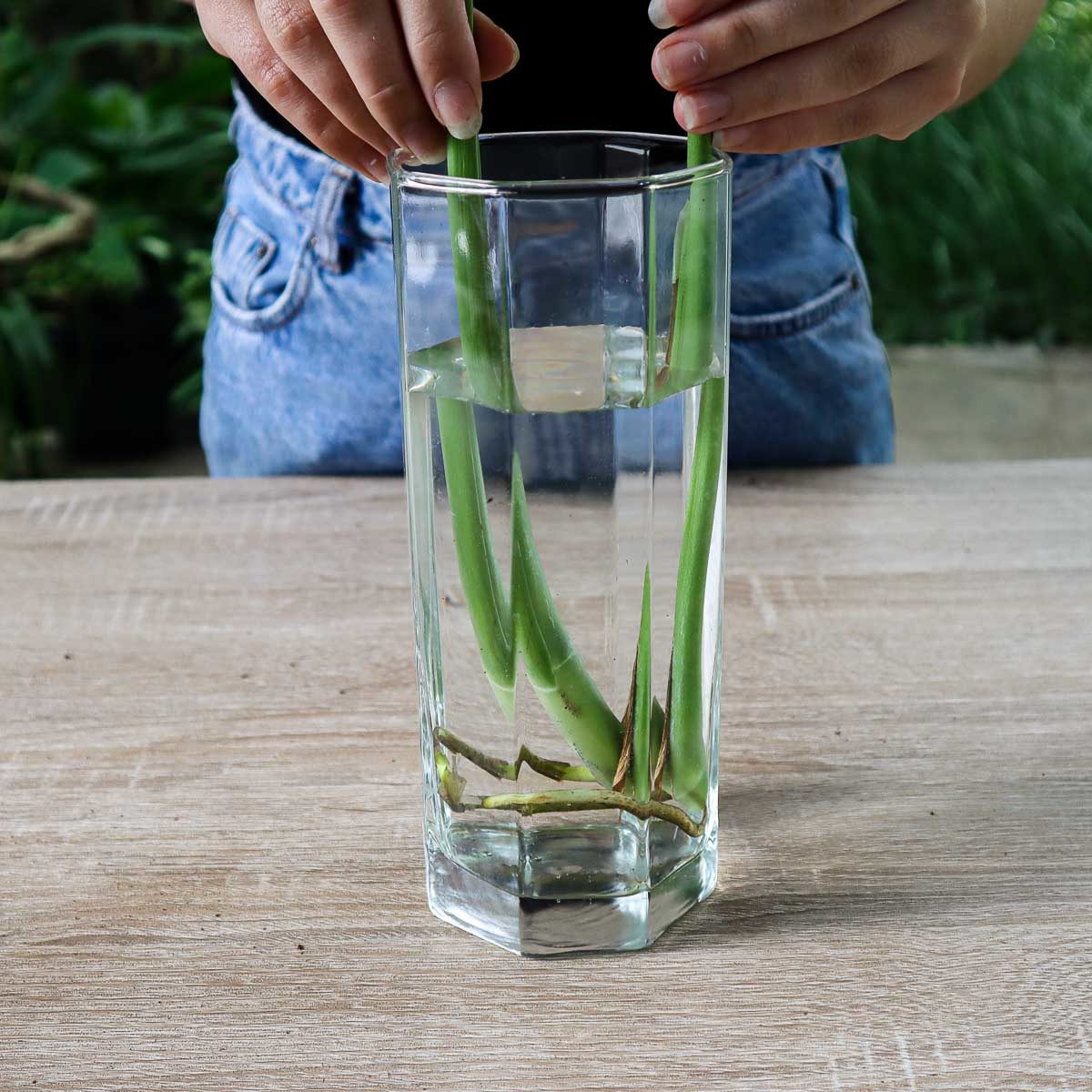
Try to choose a cutting with several leaves to fill out a vase. Alternatively, you can take several cuttings at one time.
Caring For Your Water-Grown Monstera
Environment
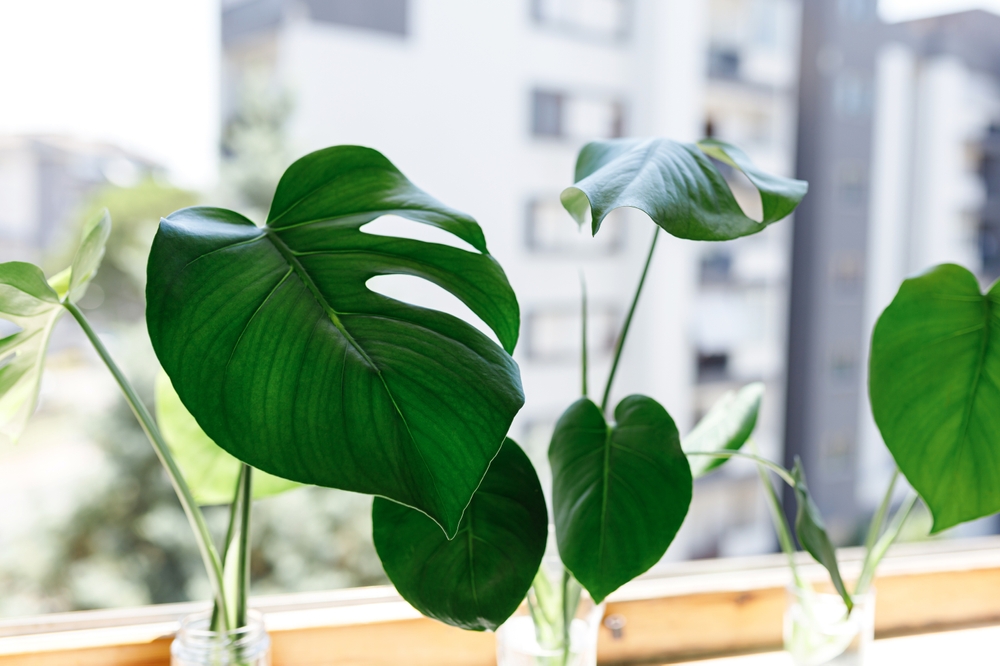
The required environment for your water-grown Monstera is the same as the one you would grow in soil. However, it’s important to match the preferred conditions as much as possible to limit stress as the cutting is not growing in the most ideal of conditions.
Give your Monstera no less than a full day of bright indirect light. They can even tolerate some gentle direct sun in the mornings, giving them all the energy they need to produce and maintain root growth. Low light is not suitable for water-grown Monsteras as they will ultimately begin to wilt and yellow with lack of light.
Temperatures should remain warm throughout the year, above 65F at least. The warmer the temperatures, the better the cuttings will grow. This, however, is only true up to a point. Temperatures above 90F over long periods can lead to stress. In these cases, move your plant out of any direct sun and into moderate light to provide some relief.
Humidity is also a factor. While evaporation around the plant will up the humidity slightly, it won’t be enough to improve conditions if the air in your home is very dry. Keep humidity above 60% by choosing the right room in your home and investing in a humidifier if needed.
Fertilizing
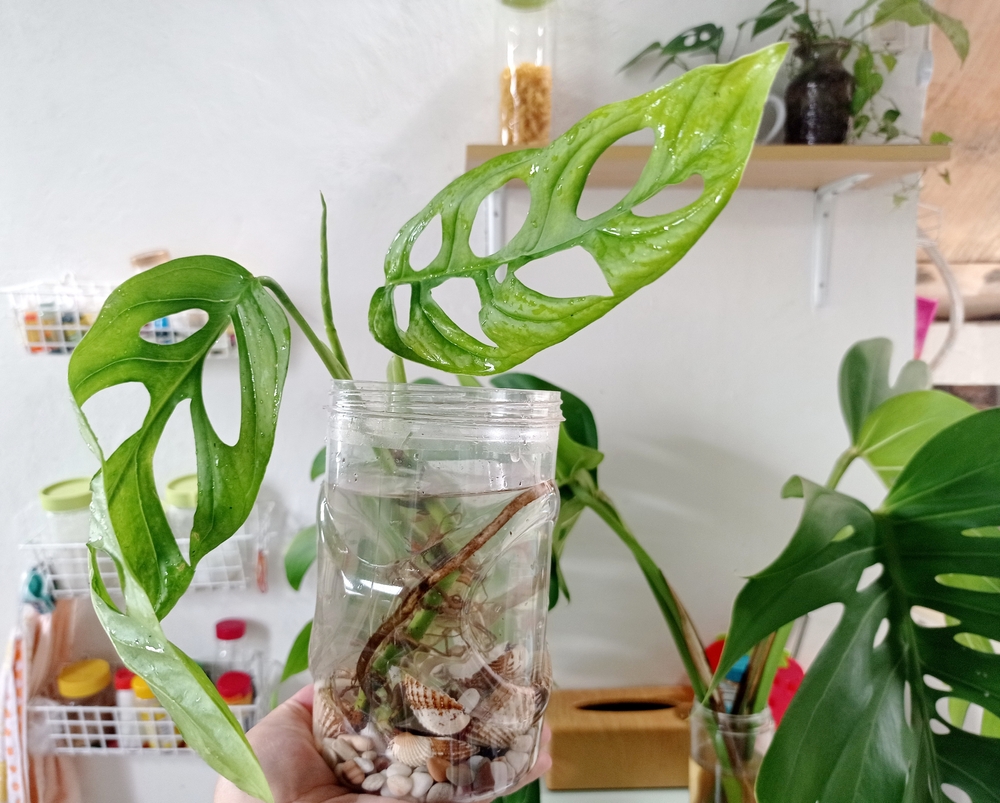
All plants need nutrients to survive. When growing in water, these essential nutrients will be severely lacking. If you want to keep your cuttings alive long-term, you’ll need to consistently add these nutrients to the water to maintain growth.
Specialized hydroponic nutrient packs are available online, designed to be added to water to grow a wide range of plants without soil. You can also use a liquid houseplant fertilizer, adding a drop or two every time you clean the water, but hydroponic nutrients will likely lead to far better results.
Maintenance
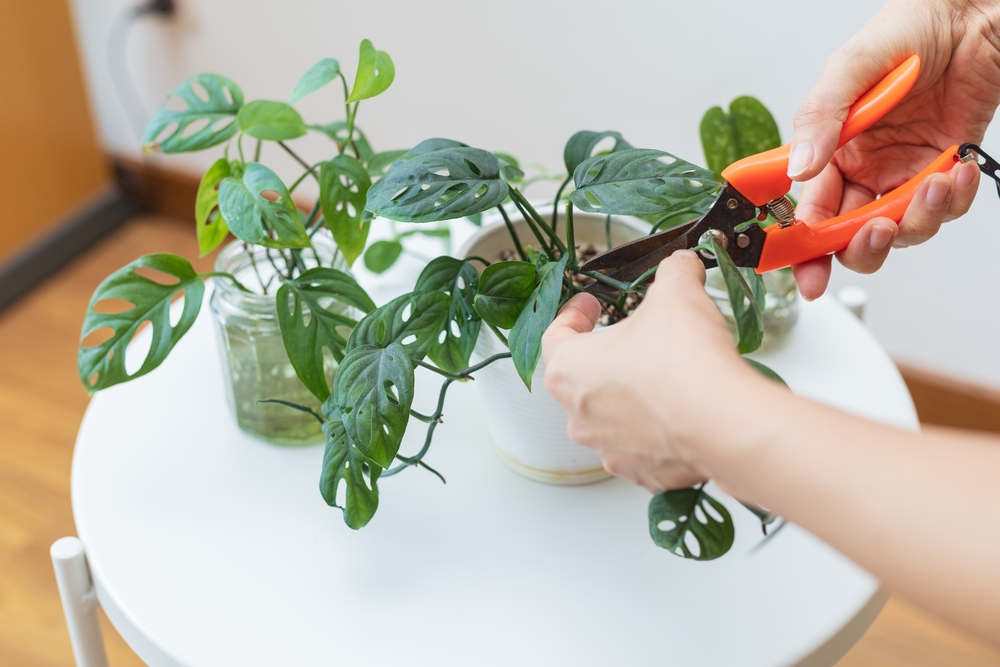
The only maintenance task you really need to consider is keeping the water clean. As the water evaporates, the roots may become exposed to the air, causing them to die off. Bacterial growth in the water can also inhibit growth and lead to rot.
Make sure to top up the water every couple of days as the waterline dips to ensure the roots are always submerged. Around once a week, replace the water completely and rinse the container. If you notice continual bacterial build-up, clean the container thoroughly and disinfect it with a bleach solution before planting again.
As long as the water stays clean and oxygenated, with a few drops of fertilizer to maximize growth, you should have no trouble keeping your Monstera happy in water for years to come.
